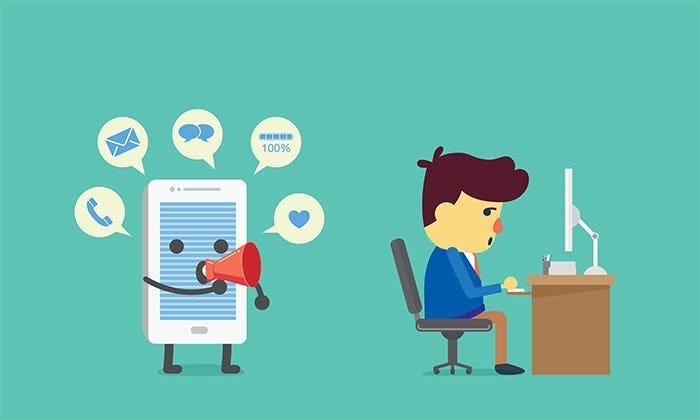Learning to Be Present in a Distracted World

— A Deep Dive into Mindfulness and Meaning in the Age of Noise
Introduction
We live in an age of perpetual distraction. Notifications ping. Apps lure our attention. Multitasking is celebrated. As a result, many people live in a state of mental fog—physically present but emotionally and mentally elsewhere. In this kind of environment, learning to be present—to live fully in the current moment—has become both a rare skill and a necessary one for inner peace, productivity, and connection.
This exploration offers a careful, insightful look into what it means to be present, why it’s difficult today, and how to cultivate this ability despite the distractions around us.
Why Presence Matters
Being present means fully engaging with the here and now—your environment, your body, your thoughts, and the people around you. This presence is not passive; it is an active awareness that:
-
Deepens relationships – When you listen without thinking ahead, people feel heard and valued.
-
Increases productivity – Focused attention allows for deeper, higher-quality work.
-
Improves emotional regulation – You become more attuned to your emotions and less reactive.
-
Enhances appreciation – Being present lets you truly experience life, rather than just pass through it.
Why the Modern World Undermines Presence
Our environment is engineered to steal our attention:
-
Digital Overload
-
Social media, emails, games, and news apps compete for mental space.
-
The average person checks their phone over 90 times a day.
-
-
Multitasking Culture
-
Busyness is worn like a badge of honor.
-
We split attention between tasks, conversations, and devices, reducing cognitive effectiveness.
-
-
Internal Distractions
-
Anxiety about the future or regret over the past keeps us mentally elsewhere.
-
We often seek distraction to avoid discomfort or boredom.
-
-
Lack of Stillness
-
Noise, schedules, and digital consumption prevent intentional reflection or rest.
-
Most people rarely spend even five minutes in true silence.
-
How to Learn Presence: Practical Tools and Mindsets
1. Practice Mindful Awareness
Mindfulness is the deliberate practice of paying attention to the present moment without judgment.
-
Start with breath: Focus on your breathing for a minute or two. Feel the inhale, the exhale.
-
Body scan: Slowly notice sensations in your body from head to toe.
-
Sensory focus: Concentrate on one of your senses—what do you hear, smell, or feel?
🔸 Exercise: Spend 10 minutes each morning sitting in silence, just noticing your breath and letting thoughts pass without chasing them.
2. Reclaim Your Attention
Design your environment to support focus:
-
Turn off non-essential notifications.
-
Set phone boundaries: Use apps like Forest or Focus to limit screen time.
-
Single-task: Focus on one thing at a time. Finish it. Then move on.
🔸 Tip: Create "focus zones" during the day—90-minute blocks where you allow no interruptions.
3. Cultivate Digital Minimalism
Instead of being controlled by technology, use it intentionally.
-
Audit your apps and screen time.
-
Designate "off hours" for devices.
-
Use tools (e.g., grayscale display, app timers) to make your devices less addictive.
“If you don’t pay for the product, you are the product.” – A reminder that your attention is the currency tech companies compete for.
4. Use Anchor Moments
Choose routine daily tasks (e.g., brushing your teeth, eating, walking) as reminders to be present.
-
Feel your footsteps.
-
Taste your food slowly.
-
Notice textures, temperatures, sounds.
🔸 Try this: The next time you’re washing dishes, do only that. Feel the water. Hear the sound. Notice your posture. Be in it.
5. Reflect and Journal
End each day with reflection:
-
What did I notice today?
-
When was I most present?
-
What distracted me?
Journaling strengthens self-awareness and helps break unconscious patterns of distraction.
Deeper Shifts: Mindsets That Support Presence
-
Acceptance Over Control
-
Learn to sit with discomfort rather than escape it.
-
Presence often means being with what is, not what you wish it were.
-
-
Slowness as Strength
-
Slowing down isn't laziness; it’s clarity.
-
When you’re not rushing, you see more, feel more, and connect deeper.
-
-
Impermanence and Gratitude
-
Realize that this moment—whether pleasant or not—is temporary.
-
Gratitude naturally emerges when we realize how fleeting life is.
-
The Challenges You’ll Face
-
Boredom: Being present can feel dull at first. That’s because your brain is used to stimulation.
-
Restlessness: You’ll want to reach for your phone. This is habit, not necessity.
-
Emotional resistance: Presence brings up emotions we’ve long suppressed.
Don’t avoid these signs—they are signs of progress.
Conclusion: A Better Way of Living
Being present in a distracted world isn’t easy, but it is deeply worth it. In practicing presence, you reclaim your mind, your emotions, your relationships, and ultimately, your life. Every moment becomes richer, more real.
It’s not about perfection. You’ll be distracted sometimes. But every time you gently return to the moment, you strengthen the muscle of awareness.
“Wherever you are, be all there.” – Jim Elliot
Optional Tools to Explore
-
Apps: Headspace, Insight Timer, Calm, One Sec
-
Books:
-
The Power of Now by Eckhart Tolle
-
Indistractable by Nir Eyal
-
Digital Minimalism by Cal Newport
-
-
Podcasts: The Mindful Kind, Ten Percent Happier, On Being






